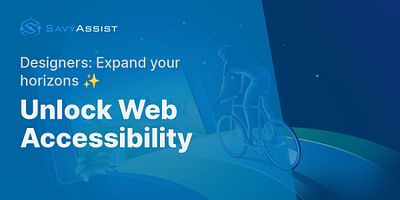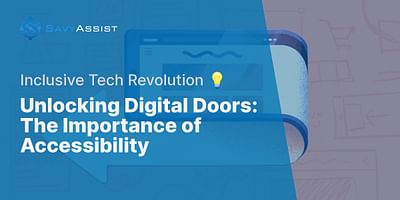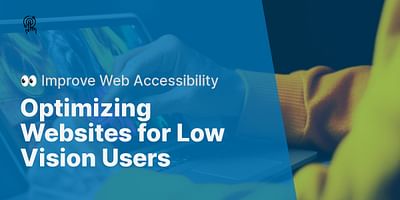Arthur is a seasoned UX designer and an authority in the field of accessibility consultancy. With a proven track record of collaborating with a multitude of companies, he has significantly enhanced the accessibility of their products. Arthur is driven by a fervor for crafting user experiences that are all-embracing and inclusive.
Making your website accessible for people with disabilities is not only the right thing to do but also essential for providing an inclusive user experience. By following some simple guidelines and implementing assistive technologies, you can ensure that your website is accessible to a wider audience. Here are some tips to help you get started:
1. Follow web accessibility guidelines: Familiarize yourself with the Web Content Accessibility Guidelines (WCAG) 2.1, which provide a comprehensive set of recommendations for making web content more accessible. These guidelines cover a wide range of accessibility issues, including keyboard navigation, color contrast, alternative text for images, and more.
2. Use descriptive headings and proper structure: Organize your content using headings (H1, H2, etc.) to create a logical hierarchy. This helps screen readers and other assistive technologies understand the structure of your web page. Make sure your headings accurately describe the content they precede.
3. Provide alternative text for images: Add descriptive alt text to all images on your website. This allows screen readers to read out the description of the image to visually impaired users. Use concise and meaningful descriptions that convey the purpose or content of the image.
4. Ensure keyboard accessibility: Test your website's keyboard accessibility by navigating through all interactive elements using only the Tab key. Users with motor disabilities may rely on keyboards or alternative input devices to navigate your website. Make sure all interactive elements, such as buttons and links, are easily accessible and operable using the keyboard alone.
5. Implement proper color contrast: Ensure that the text and background colors on your website have sufficient contrast to be easily readable. This is particularly important for users with visual impairments or color blindness. Use online tools to check the contrast ratio and make necessary adjustments.
6. Provide transcripts and captions for multimedia: If your website includes videos or audio content, provide transcripts and captions. Transcripts allow users with hearing impairments or those who prefer reading to access the content, while captions help users understand the audio content.
7. Make forms accessible: Ensure that your forms are accessible to users with disabilities. Use clear labels, provide instructions, and use proper error messages. Consider implementing form validation to assist users in completing the form correctly.
8. Test with assistive technologies: Use screen readers, speech-to-text software, and other assistive technologies to test your website's accessibility. This will help you identify any issues and make necessary improvements.
Remember, accessibility is an ongoing process. Regularly audit and update your website to ensure it remains accessible as technologies and guidelines evolve. By making your website accessible, you are not only providing equal access to information but also opening up new opportunities for individuals with disabilities to engage with your content.















